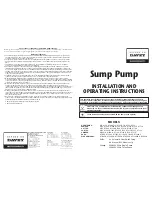
7
Technical Information
Service Manual
2 %
10 %
Oxygen 0 % to 100 %
HC R-290
Refrigerant
Flammability
Safety Data
Hazard I
V# !$&
For ignition, the concentration of HC in air has to be between the lower and upper
< ! \=^
? ! $ > <
## ! \"=^ J Q!$
combustion.
Possible ignition sources are:
1. A flame, for example from brazing torch, halide torch leak lamp, match or
lighter, cigarette
2. A spark from an electrical component
3. Static electricity
4. Hot surfaces
·
Q !\=^
·
Readily forms an explosive air-vapour mixture at ambient temperatures.
·
Vapour is heavier than air and may travel to remote sources of ignition (e.g.
along drainage systems, into basements etc).
·
%$ $#\##Q?J&^
·
Cold burns (frostbite) will result from skin / eye contact with liquid.
·
Liquid release or vapour pressure jets present a risk of serious damage to
the eyes.
·
Abuse involving inhalation of high concentrations of vapour, even for short
periods, which can produce unconsciousness or may prove fatal. Inhalation
may cause irritation to the nose and throat, headache, nausea, vomiting,
dizziness and drowsiness. In poorly ventilated areas unconsciousness or
asphyxiation may result.
By way of illustration please compare to the schematic view:
1. Oxygen
2. Ignition source and
{V >
To ignite HC R-
290, three (3)
components
must exist at the
same time at
work area
to cause the
refrigerant
burning!
1 kg of liquid HC
R-290 refrigerant
creates about
250 litres of gas
Beside the flam-
mability, most
other safety
properties are
similar to other
refrigerants!
Rely always on
best service
practices in
refrigeration!










































